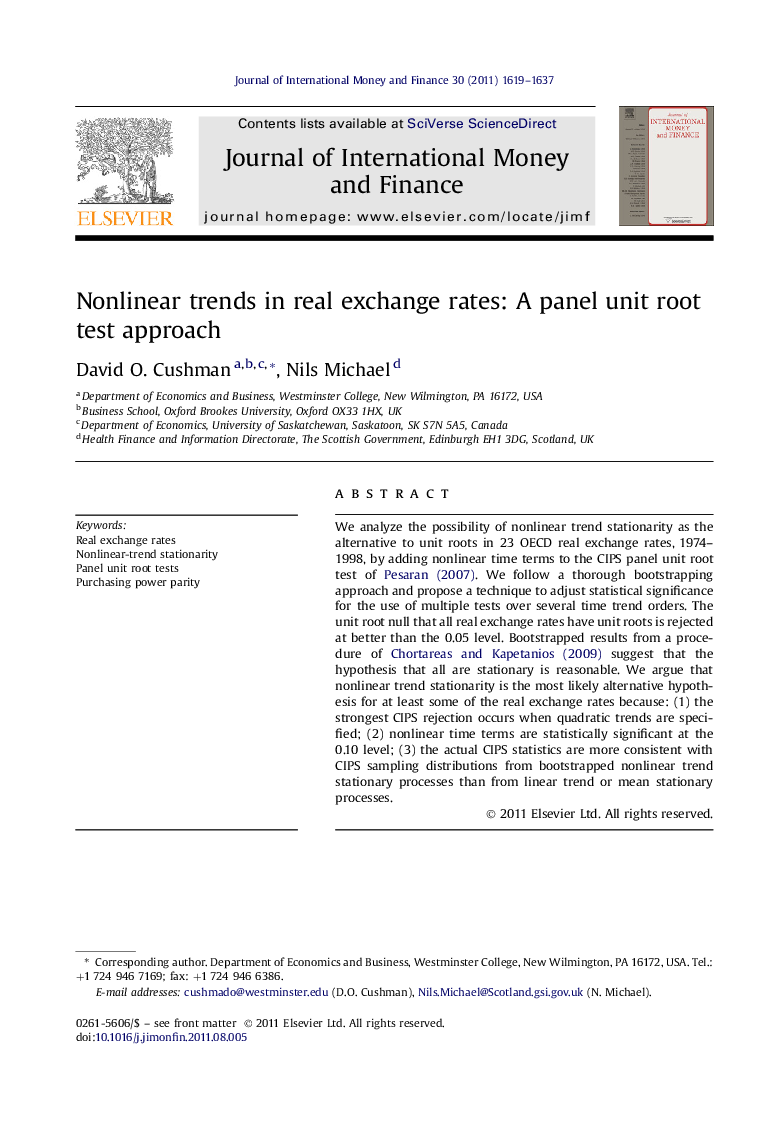| Article ID | Journal | Published Year | Pages | File Type |
|---|---|---|---|---|
| 964264 | Journal of International Money and Finance | 2011 | 19 Pages |
We analyze the possibility of nonlinear trend stationarity as the alternative to unit roots in 23 OECD real exchange rates, 1974–1998, by adding nonlinear time terms to the CIPS panel unit root test of Pesaran (2007). We follow a thorough bootstrapping approach and propose a technique to adjust statistical significance for the use of multiple tests over several time trend orders. The unit root null that all real exchange rates have unit roots is rejected at better than the 0.05 level. Bootstrapped results from a procedure of Chortareas and Kapetanios (2009) suggest that the hypothesis that all are stationary is reasonable. We argue that nonlinear trend stationarity is the most likely alternative hypothesis for at least some of the real exchange rates because: (1) the strongest CIPS rejection occurs when quadratic trends are specified; (2) nonlinear time terms are statistically significant at the 0.10 level; (3) the actual CIPS statistics are more consistent with CIPS sampling distributions from bootstrapped nonlinear trend stationary processes than from linear trend or mean stationary processes.
► We apply the CIPS test with nonlinear trends to 23 OECD real exchange rates, 1974–98. ► We use a thorough bootstrap approach to generate p-values. ► The null that all 23 rates have unit roots is rejected at the 0.05 level. ► Another test suggests it is reasonable to assume all are mean or trend stationary. ► Further evidence suggests that at least some of the trends are nonlinear.
